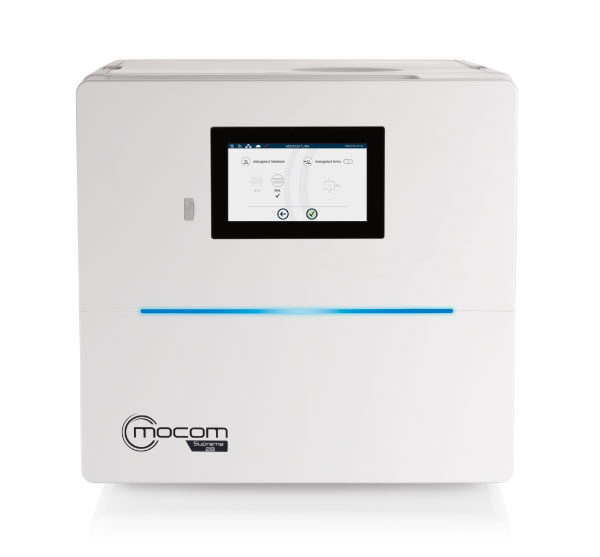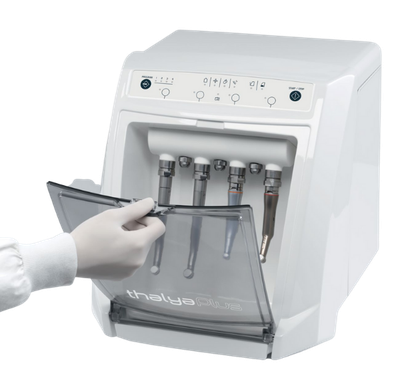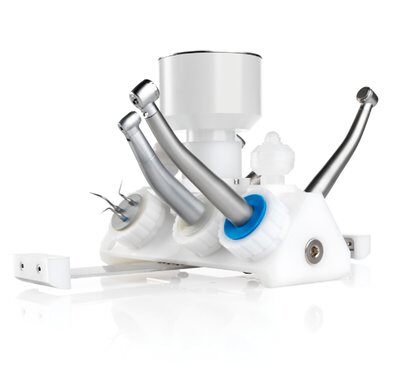
24 November 2025
Sterilisation in the dental surgery: ensuring safety for patients and staff
Proper sterilization procedures are a cornerstone of infection control in the dental office and are the main defense against cross-contamination. In an environment where blood, saliva and other potentially infectious substances are routinely encountered, strict sterilization protocols are not only recommended practices but essential requirements that protect both patients and health care workers.
Risks associated with unsatisfactory sterilization
Dental procedures involve direct contact between instruments and biological fluids from inside the oral cavity, blood and saliva, creating multiple pathways for pathogen transmission. Without proper sterilisation, dental instruments can become vectors for viral and bacterial infections. On one hand, the consequences of inadequate sterilisation potentially expose patients to several diseases, on the other hand may create liability issues for dental practices or lead to questionable civil responsibility.
Effective reprocessing procedures ensure that all reusable dental instruments, prior to being used on a patient, are completely free from viable microorganisms, including bacteria, viruses, fungi, and spores. This process involves multiple stages, beginning with thorough cleaning to remove visible debris and organic matter, followed by packaging and sterilisation using validated methods such as saturated steam autoclaving.
Following the established protocol to guarantee compliance and safety
Effective reprocessing requires systematic implementation of protocols based on recognised guidelines and directives and using validated equipment. The process begins after the used instrument has been collected. Thorough cleaning is performed with automatic instrument washers. Mechanically with pressurised water or using ultrasonic means, combined with the chemical effects of a detergent, these automatic devices remove the organic elements, paying close attention to the protein component. Instruments must then be properly disinfected; thermal disinfectors are an ideal solution for achieving thorough disinfection with reduced operating costs.
These are subsequently packaged in appropriate bags or pouches and placed in an autoclave for sterilisation; the bags preserve the sterile condition after this step in the reconditioning process. Saturated steam sterilisation remains the gold standard for most dental instruments, requiring temperatures of 121°C for at least 20 minutes or 134°C for at least 3.5 minutes, depending on the load characteristics.
With a wide range of high-tech equipment, renowned for its efficiency and sustainability, Mocom provides a broad range of automatic solutions covering the key stages of the so-called sterilisation protocol divided into 10 stages:
- COLLECTION
- DISINFECTION
- WASHING
- RINSING
- DRYING
- INSPECTION & MAINTENANCE
- PACKAGING
- STERILISATION
- TRACEABILITY
- STORAGE
Mocom provides solutions for all stages except for the first, sixth and tenth stage. In particular, Tethys H10 Plus is a single device that covers the disinfection, washing, rinsing and drying stages, with a 4-in-1 system. Furthermore, the Mocom range of autoclaves caters for all needs and provides equipment with different load capacities, maintaining the same external dimensions. Traceability is handled with MyTrace dedicated software developed by the company.
Regulatory compliance and professional standards
Dental practices must adhere to multiple regulatory frameworks, involving official bodies and regulations in most countries. Validated methods, documented procedures and traceability form a part of these regulations alongside the effectiveness of the devices used. Regular staff training helps to ensure consistent implementation of sterilisation protocols.
Understanding how to handle instruments, recognise reprocessing failures, maintain equipment and document procedures for quality assurance and regulatory compliance are essential aspects of a professional approach to hygiene in the dental surgery.
The importance of latest-generation sterilisation equipment
The autoclave is at the centre of sterilisation procedures. Mocom provides a family of units that ensure top-tier sterilisation. Recently, the range was entirely renewed with new autoclaves, all sizes, with a contemporary design, more reliable than ever, easy to use thanks to the new displays and with even shorter cycle times.
A true benchmark in this field, top-of-the-class model Supreme accomplishes 50 cycles with just 5 litres of tap water, the first ever closed-loop autoclave that reutilises water through a specific internal filtration system that recycles water to be reused in the following cycles. Minimal waste, minimal consumption, minimal costs. Beyond this degree of efficiency, it also means abandoning the need to stock demineralised water at the clinic.
Sterilisation procedures in dental clinics represent a fundamental responsibility that goes beyond regulatory compliance. They represent a commitment to creating a safe environment for both patients and staff. As dental procedures continue to evolve and the required standards of hygiene and quality are higher and higher, maintaining rigorous sterilisation standards is vital, and investing in adequate sterilisation equipment, training and monitoring systems is indispensable.



























Share on...